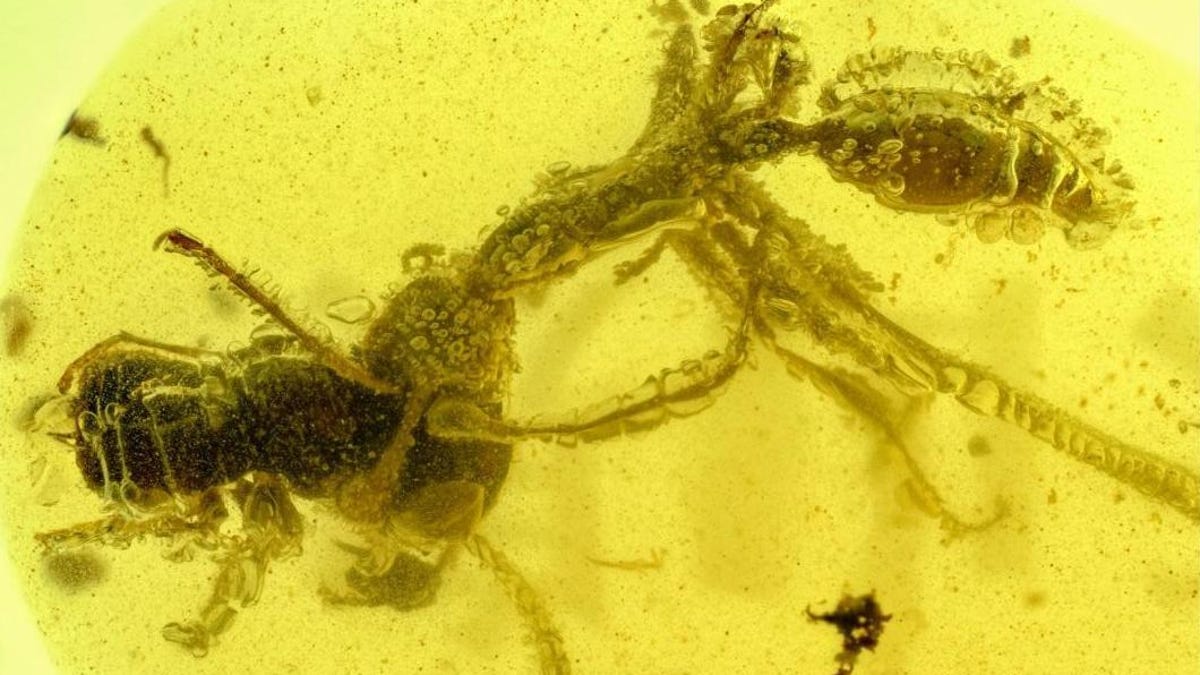Freaky 'hell ant' found frozen in 99-million-year-old amber with bug in its maw
"Deadly, scythe-like mandibles" would be a great heavy metal band name.
Murder hornets. Deadpool "assassin" flies. Zombie cicadas. This year has been weird when it comes to insects, but I have some good news. At least "hell ants" are extinct.
Haidomyrmecine ("hell ants") lived during the Cretaceous period. One of these small, strange creatures was discovered trapped in 99-million-year-old amber. But that's not all. This particular specimen was found with a nymph of a cockroach-like insect firmly in its grasp.
The startling scene of an ancient predation attempt has opened a window to the past for a team of researchers led by evolutionary biologist Phillip Barden of the New Jersey Institute of Technology (NJIT). Barden is the lead author of a study on hell ants published in the journal Current Biology on Thursday.
The newly discovered ant species is called Ceratomyrmex ellenbergeri.
This illustration gives a clearer look at what is happening with the hell ant in amber.
According to a release from NJIT, the specimen "presents some of the first direct evidence showing how it and other hell ants once used their killer features -- snapping their bizarre, but deadly, scythe-like mandibles in a vertical motion to pin prey against their horn-like appendages."
Modern ants use a lateral motion to grab their prey, which makes hell ants like this one all the odder.
An illustrated version of the ant and nymph gives a clearer view of the ant's unusual physical features and how it's holding onto its prey.
"This fossilized predation confirms our hypothesis for how hell ant mouth parts worked," Barden said. "The only way for prey to be captured in such an arrangement is for the ant mouth parts to move up and downward in a direction unlike that of all living ants and nearly all insects."
Barden described this unusual mouth mechanism as an "evolutionary experiment." The researcher has investigated and described other types of hell ants, including a horned ant named after Vlad the Impaler.
These long-gone insects are fascinating creatures, and Barden is still curious as to why hell ants died out. "I think fossil insects are a reminder that even something as ubiquitous and familiar as ants have undergone extinction," he said.


